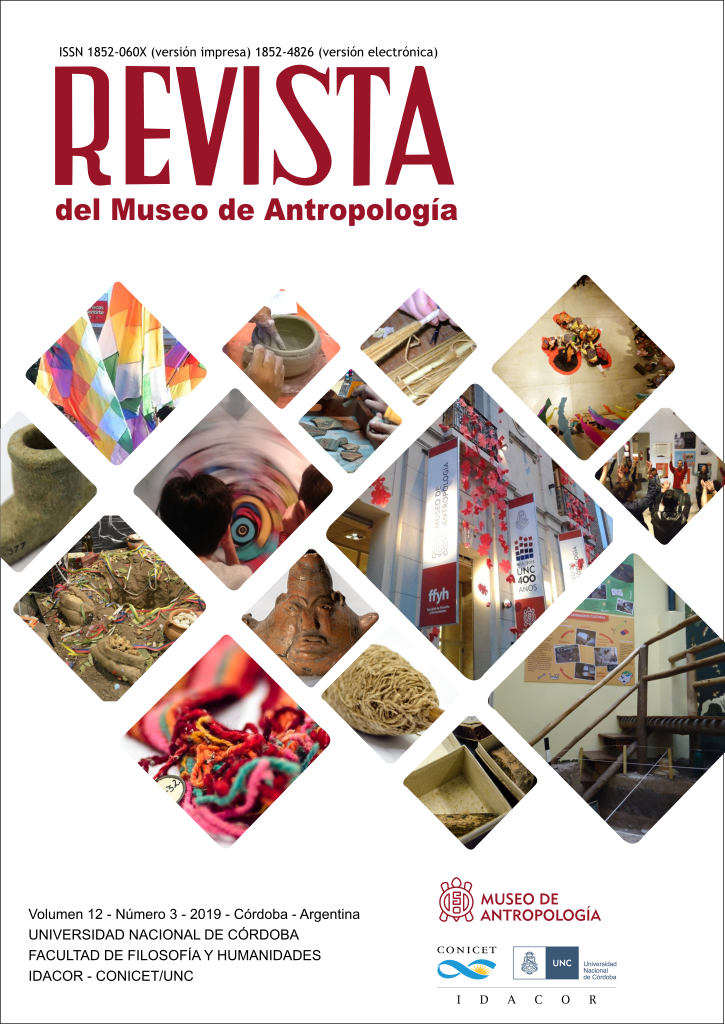Análisis arqueobotánico de porotos carbonizados recuperados en el sitio tardío La Estancia (Catamarca, Argentina)
DOI:
https://doi.org/10.31048/1852.4826.v12.n3.24377Palabras clave:
Valle de Hualfín, Período tardío, Análisis macroscópico, Phaseolusvulgaris, Identificación taxonómicaResumen
El objetivo del presente trabajo es analizar los restos vegetales carbonizados de Phaseolus spp recuperados en el recinto 13 del sitio La Estancia, un poblado arqueológico del Valle de Hualfín, localizado en el municipio de La Puerta de San José (Provincia de Catamarca). La Estancia está constituido por 13 recintos cerrados, espacios semiabiertos y muros de contención construidos con pirca emplazados sobre una lomada. Las dataciones radiocarbónicas obtenidas para este sitio ubican su ocupación principalmente en el siglo XV, es decir, en los momentos finales del desarrollo cultural prehispánico regional. La muestra bajo análisis está conformada por 28 cotiledones y semillas que se identifican taxonómicamente sobre la base de sus caracteres externos macroscópicos: forma, textura externa, textura interna, confluencia de los márgenes, forma del contorno, forma de las caras y forma del ápice; y morfométricos: ancho y espesor. Mediante el empleo de material de referencia y la corroboración con bibliografía e ilustraciones de la temática se determinó que la muestra pertenece a Phaseolus vulgaris var. vulgaris L.
Descargas
Descargas
Publicado
Número
Sección
Licencia
Aquellos autores/as que tengan publicaciones con esta revista, aceptan los términos siguientes:
- Los autores/as conservarán sus derechos de autor y garantizarán a la revista el derecho de primera publicación de su obra, el cual estará simultáneamente sujeto a la Licencia de reconocimiento de Creative Commons que permite a terceros compartir la obra siempre que se indique su autor y su primera publicación en esta revista.
- Los autores/as podrán adoptar otros acuerdos de licencia no exclusiva de distribución de la versión de la obra publicada (p. ej.: depositarla en un archivo telemático institucional o publicarla en un volumen monográfico) siempre que se indique la publicación inicial en esta revista.
- Se permite y recomienda a los autores/as difundir su obra a través de Internet (p. ej.: en archivos telemáticos institucionales o en su página web) antes y durante el proceso de envío, lo cual puede producir intercambios interesantes y aumentar las citas de la obra publicada. (Véase El efecto del acceso abierto).














